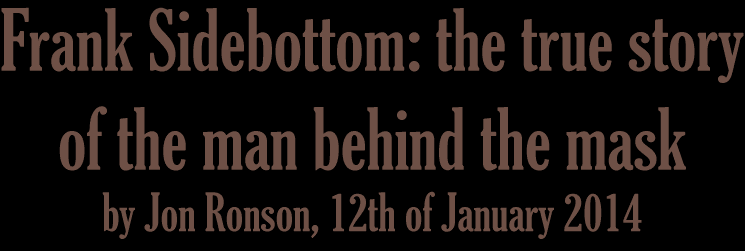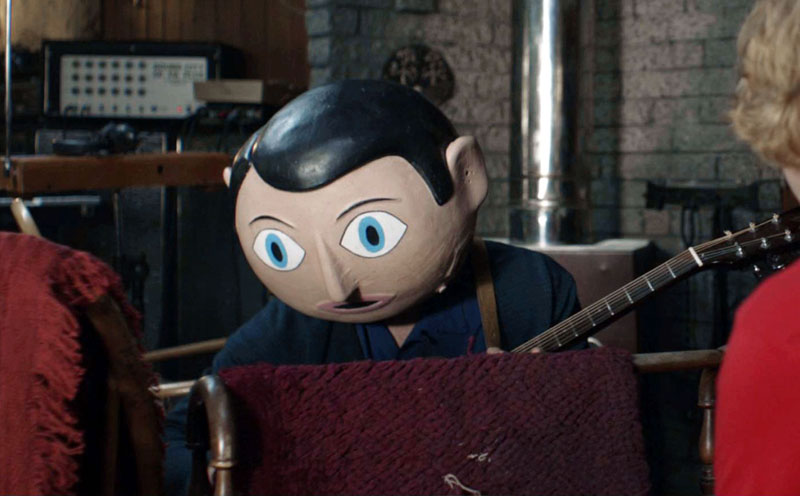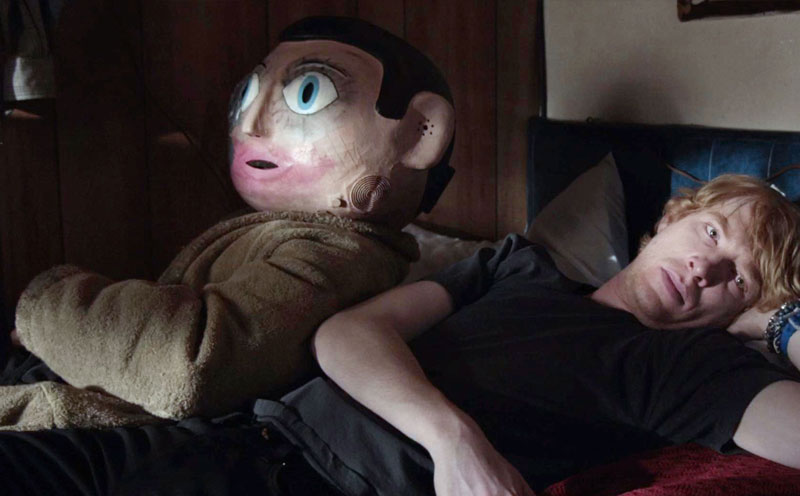
|

|

|

|

|

|

|

|

|

|

|

|


In 1987 I was 20 and the student union entertainments officer for the Polytechnic of Central London. One day I was sitting in the office when the telephone rang. I picked it up.
"So Frank's playing tonight and our keyboard player can't make it and so we're going to have to cancel unless you know any keyboard players," said a frantic voice.
I cleared my throat. "I play keyboards," I said.
"Well you're in!" the man shouted.
"But I don't know any of your songs," I said.
"Wait a minute," the man said.
I heard muffled voices. He came back to the phone. "Can you play C, F and G?" he said.
The man on the phone said I should meet them at the soundcheck at 5pm. He added that his name was Mike, and Frank Sidebottom's real name was Chris. Then he hung up.
When I got to the bar it was empty except for a few men fiddling with equipment.
"Hello?" I called.

The men turned. I scrutinised their faces. In the three hours since the phone call I'd learned a little about Frank Sidebottom – how he wore a big, fake head and there was much speculation about his real identity. Some thought he might be the alter ego of a celebrity, possibly Midge Ure, the lead singer of Ultravox, who was known to be a big Frank Sidebottom fan. Which of these men might be Frank? If I looked closely would there be some kind of facial clue?
Then I became aware of another figure kneeling in the shadows, his back to me. He began to turn. I let out a gasp. Two huge eyes were staring at me, painted onto a great, imposing fake head, lips slightly parted as if mildly surprised. Why was he wearing the head when there was nobody there to see it except for his own band? Did he never take it off?
"Hello, Chris," I said. "I'm Jon."
Silence.
"Hello ... Chris?"
Nothing.
"Hello ... Frank?" I tried.
"HELLO!" he yelled.
Another of the men came bounding over to me. "You're Jon," he said. "I'm Mike Doherty. Thank you for standing in at such short notice."
"So," I said. "Maybe we could run through the songs? Or ... ?"
Frank's face stared at me.
"Frank?" Mike said.
"OH YES?"
"Can you teach Jon the songs?"
At this Frank raised his hands to his head and began to prise it off, turning slightly away, like he was shyly undressing. I thought I saw a flash of something under there, some contraption attached to his face.
"Hello, Jon," said the man underneath. He had a nice, ordinary face. He gave me a sheepish smile, as if to say he was sorry that I had to endure all the weirdness of the past few minutes but it was out of his hands.
Before I knew it we were onstage. As we played I watched it all – the band assiduously emulating the tinny pre-programmed sounds of a cheap, children's keyboard, the enraptured audience, and Frank, the eerie cartoon-character frontman, his facial expression immobile, his singing voice a high-pitched nasal twang.
After that night – the greatest of my life – a year passed. Life went back to normal. Then Mike phoned and asked if I wanted to be in Frank's band full time. So I quit college and moved to Manchester.
And there I was, in the passenger seat of a Transit van flying down the M6 in the middle of the night, squeezed between the door and Frank Sidebottom. Those were my happiest times – when Chris would mysteriously decide to just carry on being Frank. Nothing makes a young man feel more alive and on an adventure than speeding down a motorway at 2am next to a man wearing a big fake head. I'd watch him furtively as the lights made his cartoon face glow yellow and then black and then yellow again.
I am writing this 26 years later. The music journalist Mick Middles recently sent me his not-yet-published biography Frank Sidebottom: Out of His Head. His book captures perfectly that "rarest of journeys" when an onlooker got to see the man born Chris Sievey turn into Frank. "The moment the head is placed the change occurs. Not merely a change in attitude or outlook but a journey from one person to the other. I completely believe that Chris was born as two people." Middles likens Chris to transgender people, trapped in the wrong body.
